Ancient City of Babylon: Conquered, Occupied, Abandoned, Rebuilt and Destroyed, Part 1 of 2


There are those very dear to me in the faith of the Risen Lord Jesus Christ who consider me to be an “eschatological heretic” for teaching that the literal “City of Babylon” must be rebuilt in the future. They state that I am “calling God a liar” by teaching such a doctrine of “things to come,” and that the doctrine of “dispensationalism” is a heresy derived from a wresting of the Holy Scriptures. Normally, I do not give a retort to those prophetic “historists” who take exception to my humble position, however, when your editor is accused of “calling God a liar,” that slander merits a reply.
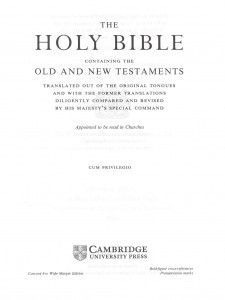
DISPENSATIONALISM
Before addressing the topic of the City of Babylon, a few words as to the “heresy” of dispensationalism. Clearly the Bible teaches that God has committed different responsibilities to certain men during certain periods of time. These responsibilities are called “dispensations” or “stewardships;” these periods of time are called “worlds” or “ages” (Galatians 1:4; Hebrews 1:2). The word “dispensation” is found in Ephesians 3:2: “the dispensation of the grace of God.” “Dispensation” means “stewardship” or “law of the house.” Thus, during the dispensation of the grace of God, the Apostle Paul was the minister of the gospel of Christ (Ephesians 3:6-7) to whom was revealed the mystery of both Jew and Gentile being one in the invisible body of Christ. We, those of us “in Christ” commissioned to preach the gospel of Christ (Matthew 28:18-20; Colossians 1:27-28), are also stewards (I Corinthians 4:2). Prior to Acts 2 upon the entrance of the Person of the Holy Spirit into the earthly bodies of believers in Messiah, there was no Church or “Body of Christ,” no gospel of the grace of God in Christ; only Israel and the nations, only God-ordained Hebrew/Jewish/Israelitish supremacy (via the unilateral Abrahamic, Mosaic and Davidic Covenants) and Gentile subordination. This Hebrew/Jewish/Israelitish supremacy is reflected in the words of Christ Himself in John 4:22 and Matthew 15:24-25. Thus, if we read the Scriptures LITERALLY we must arrive at the conclusion that there are different dispensations during which God deals with specific groups of men given certain specific responsibilities. We do not read the Scriptures with a prejudicial, “dispensational approach;” rather, we read the Scriptures LITERALLY and therefore arrive at the conclusion that indeed there are distinct dispensations—different responsibilities given to different men during different periods of time. Hence, we rightly divide the Word of Truth as commanded by Holy Writ in II Timothy 2:15; i.e., the Law was given by Moses but Grace and Truth came by Jesus Christ (John 1:17). Enough said.
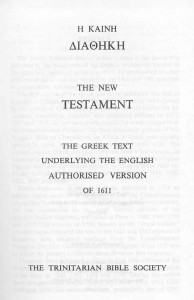
LITERAL READING OF THE SCRIPTURES
Again, before we address the topic of the City of Babylon, we must review a basic hermeneutic of Bible reading. How do we read the Scriptures? literally? or, do we have the right to interject our theological bias into a context or verse, redefine a word and thus arrive at a non-literal conclusion? Of course not! If so, what is to check the fleshly minds of self-seeking men! We are constrained to read and thus understand the inspired, inerrant and preserved Holy Scriptures, the Hebrew/Aramaic/Greek original language texts, in a LITERAL fashion. Those texts, faithfully translated in a LITERAL fashion into the English Reformation Bible born out of the Protestant Reformation, we find in the AV1611 King James Bible, that epic, consummate work of the greatest scholars of the age who were both led by the Spirit of God and tempered with suffering at the hand of Satan’s Roman Papacy. Thus, we have our text, the AV1611 English Bible and its underlying original language texts from which it was derived, the Hebrew Masoretic/Ben Chayim text and the Greek Received Text. From time to time, when clarification (not correction) of an English word or passage is necessary (as in the case of the English word “baptize”), we consult these underlying, God-breathed, preserved texts—as we are studying the Word of God in our native English language, reading it in a LITERAL manner.
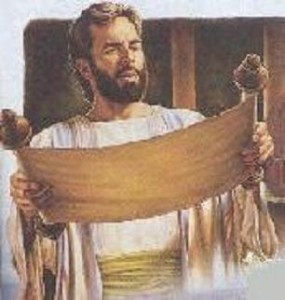
The Prime Example of reading and thus understanding the prophecies of the Holy Scriptures is none other than the Lord Jesus Christ Himself. He is the Word of God in the flesh expounding the Word of God written in the Hebrew Tenakh: both are inseparable; both are eternal. He NEVER “spiritualized” any verse, i.e., never redefined a word or phrase alien to its common meaning, and He never arrived at any conclusion other than a LITERAL conclusion when he taught and expounded the Scriptures. For example, when Christ came to Nazareth to teach in its synagogue, according to Luke 4:17-19 he read from Isaiah 61:1 and the first half of verse 2. Intriguingly, he stopped reading in the middle of Isaiah 61:2, closed the scroll and sat down. As all eyes were fastened upon him, Christ then stated “This day is this scripture fulfilled in your ears” (Luke 4:21). Obviously, he meant the scripture he had read at that moment had been LITERALLY fulfilled by Himself. The succeeding verses would be LITERALLY fulfilled at a later date (Isaiah 61:2b-11)—at his Second Coming. As an aside, by reading these prophecies LITERALLY, we have established the fact of the existence of gaps of time between certain prophetic verses of Holy Writ.
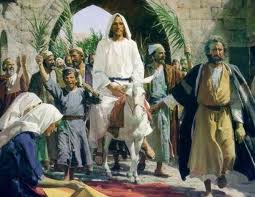
Another example of Christ’s LITERAL reading of the Scriptures is found in his LITERAL fulfillment of Zechariah 9:9. In Luke 19:28-39 the Lord Jesus instructs his disciples to enter a village, find a tied-up donkey’s colt, tell the owners the Lord have need of him, and bring the colt to Him. Christ then mounts the colt and rides it into Jerusalem formally declaring Himself to be Messiah, King of Israel—which day in world history has been termed “Palm Sunday.” At no time prior to this day had Jesus of Nazareth declared Himself Messiah to national Israel—including the day he was baptized by the Prophet John (Matthew 3:13-17). Thus, this notable act on this particular day LITERALLY fulfilled Zechariah 9:9. Indeed, Jerusalem’s King entered into her riding upon a colt, the foal of an ass! Zechariah 9:10 would be fulfilled on a future day—once again, at His Second Coming after which His physical, visible dominion would be “to the ends of the earth!” Again, by a LITERAL reading of the Scripture, we have established there must be gaps of time between certain prophetic verses, in this case, a nearly 2000-year gap of time between verses 9 and 10.
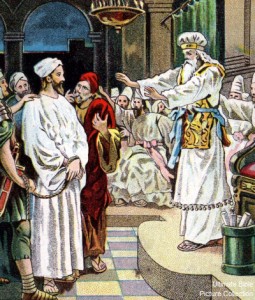 Further, yet another example of the Scriptures being understood LITERALLY is reflected by the response of Caiaphas the High Priest when Jesus of Nazareth, then on trial for his life, confessed under oath that He was the Christ, the Son of the living God. According to Matthew 26:63-66, after Messiah Jesus attributed Psalm 110:1 and Daniel 7:13-14 to Himself, that he in fact would LITERALLY fulfill those Scriptures in the future, Caiaphas understood that good confession—LITERALLY. Evidencing this LITERAL comprehension of Christ’s words, the High Priest tore his garments and declared Jesus had committed blasphemy by attributing those two Messianic verses to Himself.
Further, yet another example of the Scriptures being understood LITERALLY is reflected by the response of Caiaphas the High Priest when Jesus of Nazareth, then on trial for his life, confessed under oath that He was the Christ, the Son of the living God. According to Matthew 26:63-66, after Messiah Jesus attributed Psalm 110:1 and Daniel 7:13-14 to Himself, that he in fact would LITERALLY fulfill those Scriptures in the future, Caiaphas understood that good confession—LITERALLY. Evidencing this LITERAL comprehension of Christ’s words, the High Priest tore his garments and declared Jesus had committed blasphemy by attributing those two Messianic verses to Himself.

Further, yet another example of the Scriptures being understood LITERALLY is demonstrated in Herod’s inquiry as to where Christ, “the King of the Jews,” would be born. In Matthew 2:4-6, Herod questions the chief priests and scribes as to where Christ should be born (due to the question posed by the wise men from the East as to where was “He that is born King of the Jews?”) . In response to this solemn inquiry, the scribes answer with a LITERAL reading of Micah 5:2, giving a LITERAL answer to Herod’s question. Herod understands that LITERAL answer and ultimately sent out a Roman garrison to murder all the children two years old and younger in the LITERAL town of Bethlehem. Meanwhile, the wise men had LITERALLY understood the answer of the scribes, had gone to the LITERAL town of Bethlehem and worshipped the “young child,” Jesus—”whose goings forth have been from old, from everlasting.” Thus, Herod, the chief priests and scribes, and the foreign wise men understood the prophecy of Micah 5: 2 LITERALLY and acted upon it in a LITERAL fashion.

THE LAW OF DOUBLE REFERENCE
In LITERALLY reading the prophetic scriptures, while observing its DISPENSATIONAL context (a rule derived from a LITERAL reading of Holy Writ), we must arrive at a most perplexing and sometimes confusing conclusion. This conclusion is called “the Law of Double Reference.” Simply put, a specific prophecy has a LITERAL and PRESENT fulfillment and it also has a LITERAL and FUTURE fulfillment. It sounds confusing and maybe even “heretical,” but we shall take this topic slowly so as the reader and your editor may not be confused.
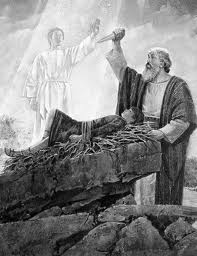
Our first example is found in Genesis 17:8. The context is the LORD confirming the racial Abrahamic Covenant with Abram and his physical posterity. The promise, in this verse, is that Abram’s physical seed would be given the land of Canaan (called “Palestine” by the Romans) for an “everlasting possession.” Further, at the time Abram’s seed inherits its promised land as “an everlasting possession,” the LORD would be the God of the entirety of that physical posterity, later called “Israel.” This is the LITERAL reading of the verse. We find however a partial fulfillment of the land promise in Joshua 24:13; the LORD gives the land of Canaan to the tribes of Israel, which land promise He gave to Abram and his seed in Genesis 17:8. But to this day Israel has never held the land as an “everlasting possession” and the LORD has not continued to be the God of Israel. At this hour, Israel has been temporarily set aside until “the fullness of the Gentiles” in Christ is completed (Romans 11:25). Thus, within Genesis 17:8 there is an immediate fulfillment of the land promise during the last days of Joshua, but there is also a future fulfillment, the land to be an “everlasting possession” of the seed of Abram—as well as resurrected Abraham himself (Luke 13:28)!—and at that time the LORD will be the God of the entire nation, of every man, every woman and every child (Jeremiah 24:7; 31:33-34).
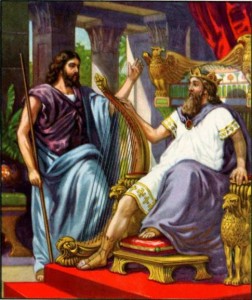
Our second example is found in II Samuel 7:12-17. The context is the LORD, via the Prophet Nathan, promising King David that he would have a “seed” whose kingdom He would establish. This seed would also build a house for the LORD’s name, a Hebrew Temple. Now both promises were LITERALLY fulfilled in Solomon, God establishing his kingdom and Solomon building what became the glorious Temple of Solomon. But the prophecy goes on to state that this kingdom of David’s seed would be established “for ever.” Since the prophecy must be LITERALLY fulfilled, that fulfillment can only happen in the future, via a future seed of David, the Lord Jesus Christ. Verse 14 further refers to the future Lord Jesus Christ being that “seed,” as that verse is quoted by the Holy Spirit (via the Apostle Paul) in Hebrews 1:5. Thus, the unilateral Davidic Covenant recorded in this context has a present and future fulfillment as we read it LITERALLY. Hence, the DOUBLE REFERENCE of the prophecy is first to Solomon, David’s immediate “seed,” and secondly to the Lord Jesus Christ, David’s distant “seed.”
![]()
![]()
Our third example is most clever and is used to attack those of us defending the Virgin Birth of Messiah from the Old Testament. Isaiah 7:14 is a promise given by the LORD (via Isaiah the Prophet) to the house of David. It is a promise that an unmarried young woman (“almah”) would bear a son whose name would be Immanuel (“God with us”). Before the child shall know to refuse the evil and choose the good the land that Judah hates (Syria and Israel) would be forsaken of both kings (Rezin and Remaliah) that had besieged Jerusalem. Thus, within a few short years the wicked kings of Syria and Israel died as was spoken by Isaiah the Prophet. This was the LITERAL and immediate fulfillment of the prophecy. However, there was a future fulfillment of Isaiah 7:14 as it is quoted in Matthew 1:23 referring to the Lord Jesus Christ. The Holy Spirit uses the specific Greek word for “virgin” (“parthenos”) indicating that “almah” of Isaiah 7:14 could also carry the meaning of “virgin” in certain contexts. Low and behold, we find “almah” in only three other verses of the Old Testament translated “virgin” each and every time: Genesis 24: 43 referring to Rebekah, Isaac’s future wife; Song of Solomon 1:3 referring to the “virgins” that love Solomon; and Song of Solomon 6:8 referring to the “virgins without number.” Clearly, “almah” is always a young woman who is unmarried and therefore, generally, is a virgin. Hence, Isaiah 7:14 has a LITERAL immediate fulfillment and a LITERAL future fulfillment. This is the LAW OF DOUBLE REFERENCE—due to the Holy Spirit’s double usage of a word—arising from the LITERAL reading of the Holy Scriptures.
![]() Therefore, as we approach the topic of the City of Babylon of the Old Testament, we shall read the prophecies LITERALLY and expect LITERAL fulfillment, nothing less. We shall keep in mind the LAW OF DOUBLE REFERENCE as well as the fact that the prophecies pronounced against the City of Babylon occurred during the DISPENSATION of the Law of Moses during which time God dealt with only two entities, Israel and the Gentile nations, the Church of the risen Lord Jesus Christ being a mystery hidden God and never referenced throughout the entire Old Testament.
Therefore, as we approach the topic of the City of Babylon of the Old Testament, we shall read the prophecies LITERALLY and expect LITERAL fulfillment, nothing less. We shall keep in mind the LAW OF DOUBLE REFERENCE as well as the fact that the prophecies pronounced against the City of Babylon occurred during the DISPENSATION of the Law of Moses during which time God dealt with only two entities, Israel and the Gentile nations, the Church of the risen Lord Jesus Christ being a mystery hidden God and never referenced throughout the entire Old Testament.
CITY OF BABYLON—CONQUERED
End of Part 1 of 2
